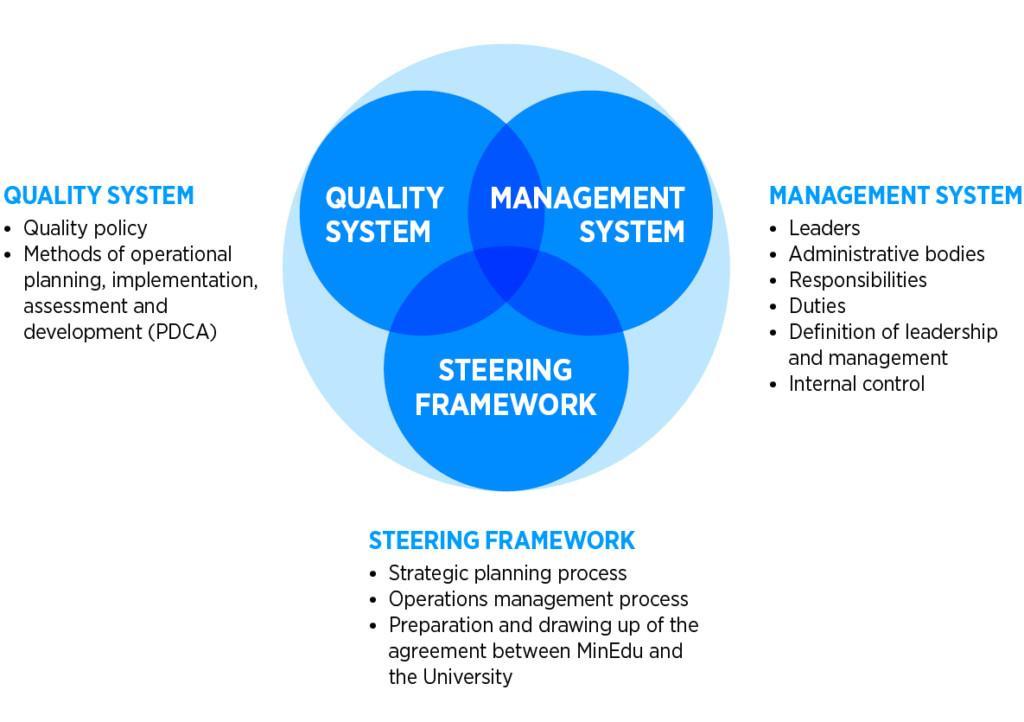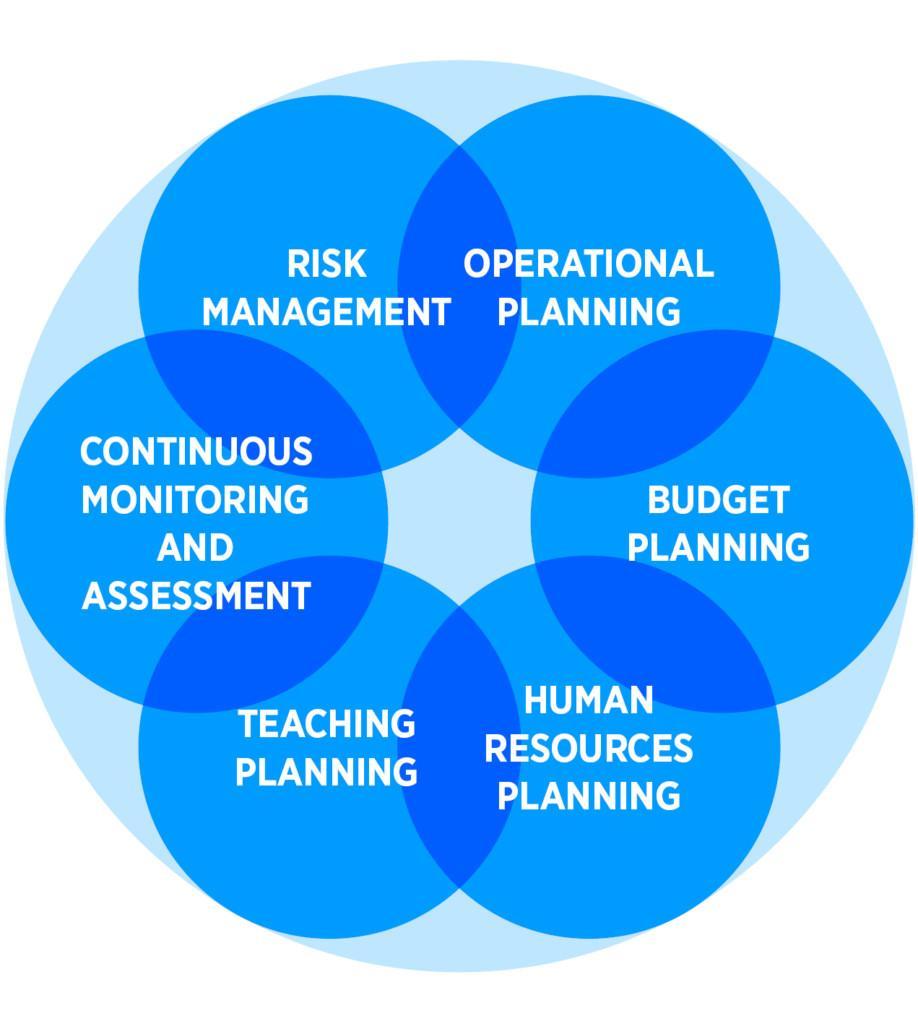The university’s integrated management system needs to be streamlined
As described in the self-assessment report (SAR) and the intranet Flamma, the university has an integrated management system that combines quality system, management system and steering framework. The quality system follows the Plan-Do-Check-Act (PDCA) model where the development objectives make the starting point of the planning cycle with the target of continuous development driven by follow-up indicators and other data, feedback and evaluation data and internal audits.
The key principles, objectives and responsibilities of the quality system have been clearly defined on the university’s intranet Flamma and on the external web pages in three languages. The quality policy states that the aim of quality work is to support the achievement of the university’s strategic objectives, and it assigns the responsibility to each member of the university community in contributing to those objectives and for the quality of their own work. The quality policy also states that the purpose of the quality system is to provide the supporting framework for the quality management of the university’s activities.
The integrated management system has evolved organically from on the one hand traditional steering systems and methods, which were described during the audit visit as ‘top-down’, and on the other hand a quality system which was considered as ‘bottom-up’. New elements have been amalgamated with the old ones and the system has been modified to meet the temporal requirements and novelties. This has resulted in a rather complex system which should be streamlined for better and more simple usability.
Both the visualisation and the description of the system in the SAR and on Flamma are complex with partly overlapping and parallel systems. The role of the quality system in the whole system, in particular, is not fully clear. Neither is it clear how the steering framework and management system are separate entities. In the documentation available, the quality system was described as the same as the integrated management system and sometimes as a separate and subordinate system. There are currently several visualisations in place to some degree affecting the user-friendliness and understanding of the system (integrated management system, quality system, operations management system, annual cycle for the operations planning process, university-level quality cycle/navigators for different core activities and units). The need to develop the integrated management system into one coherent system was also recognised during the audit visit.
The strategic objectives of the university are at the core of the integrated management system
Based on the audit discussions, the strategy compilation process was excellent in terms of participatory approach and dialogue with both the internal and external stakeholder communities. The discussions during the audit confirmed that the staff of the university had been involved in the strategy process and could easily identify themselves in the strategy. While this approach was very laborious, it guaranteed an end product that enjoys wide support and commitment from the entire community, making the implementation easier and more successful. Based on discussions with student representatives, the compilation of the strategy was a well-managed and engaging process, and as a result they were able to see their input in the current strategy. On the other hand, it was noted that in the implementation phase students are not that involved anymore. This would be an opportunity for the university to think about innovative ways to engage the students in some of the strategy-linked processes, for instance in furthering the target ‘Our University is the best place to study and work’.
The university’s strategy forming the core of the integrated management system clearly defines the objectives for the core duties. The systematic strategic implementation process ensures that there is a clear target setting, actions are defined at university and unit levels, and there is an annual follow-up process in place connected to operations management. Many processes and actions are underway, and the university has already identified needs for further development as part of the strategy implementation.
The integrated management system serves the management, units and administration of the university
There is a certain level of discrepancy between academic freedom and a strict quality system. The faculties operate quite autonomously and have their distinct operating cultures. As described in audit discussions, there is a constant balancing at the university of how much structure and guidance should be common to all units, and on the other hand giving room for and respecting discipline and faculty needs and differences. The university has focused on developing a system serving the university as a whole, which is more flexible and dynamic than ready-made systems. A fully harmonised quality management across the entire university was considered as challenging due to the wide variety of cultures, traditions and types of science in the faculties and units.
In the discussions with university and faculty leadership, the integrated management system was considered to serve their needs well, bringing a more professional grip and effectivity to their management practices. The system has also enhanced collaboration. At the same time, the system was regarded to be quite complex, and many different digital tools are used for monitoring and reporting.
The university is commended for developing its system towards an integrated management system, which provides better support for the management of the university and the systematic implementation of its strategic objectives. However, as mentioned, there is a need for more clarity in the system but also for streamlining to make faculties and university-level approaches converge more effectively. The university has a well-functioning committee structure and uses different university-wide networks and inter-campus initiatives, and these are certainly important for a more converging approach.


